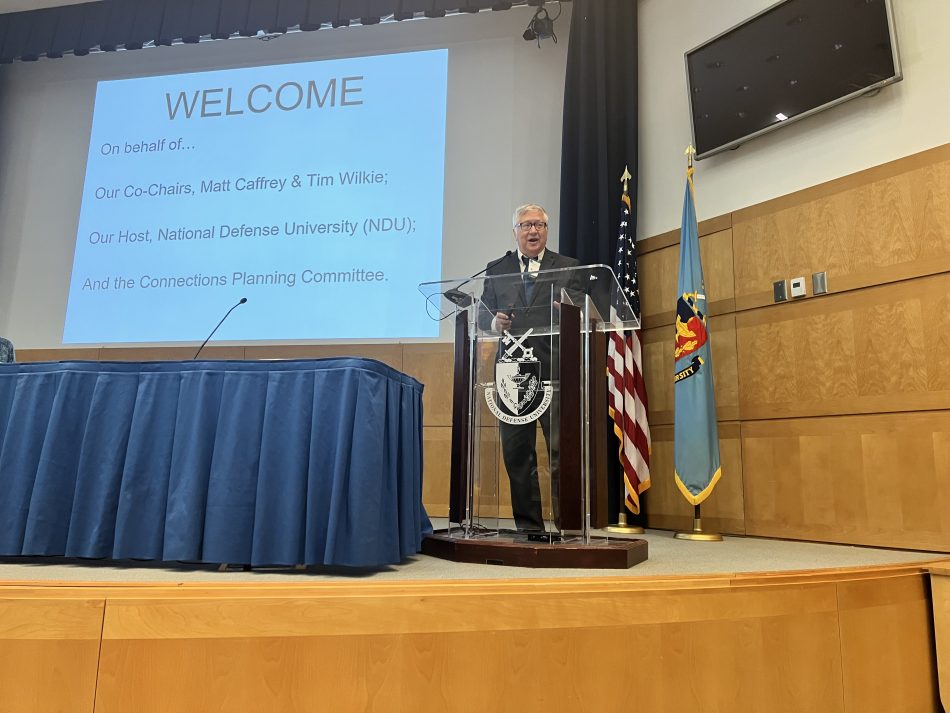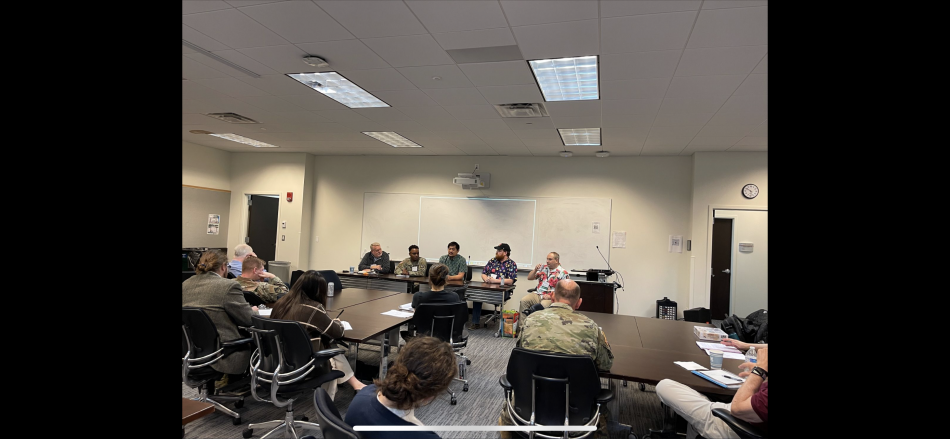Levelling Up: My First Connections Wargaming Conference
By Caroline Gilmore
 Walking through halls with painted murals of America’s biggest historical moments and portraits of George Kennan and President Barack Obama, it felt as if I was stepping into a new world. Well, perhaps not a new world, but definitely a new part of my world. It was June 22nd, the start of my first time attending a Connections Wargaming Conference at the National Defense University.
Walking through halls with painted murals of America’s biggest historical moments and portraits of George Kennan and President Barack Obama, it felt as if I was stepping into a new world. Well, perhaps not a new world, but definitely a new part of my world. It was June 22nd, the start of my first time attending a Connections Wargaming Conference at the National Defense University.
Up until that point, my experience with wargaming had been wholly extracurricular. I have been involved with George Washington University’s student wargaming and crisis management organization, Strategic Crisis Simulations (SCS), for the past two years but had never explored the professional side of wargaming. However, thanks to the encouragement of Mitch Reed, who was a mentor for an SCS event this past Spring, there I was at Connections. Navigating NDU’s halls, I thought to myself: “Let the games begin!”

The conference abounded with fascinating events and speakers. In Dr. Jim Gifford’s presentation, “Low Yield Nuclear Use in Wargames, It’s Not “Game Over Man!” I learned that “going nuclear” would be different from the movies and the importance of planning, even for (hopefully) unlikely events. Later that afternoon, the “Gaming Informing Strategy” panel opened my eyes to the professional and strategic applications of wargaming.
Because I design, facilitate, and play games for educational purposes, it was fascinating to consider how wargaming could be used as a tool to analyze and work through complex challenges or see how one system/plan may hold up under stress.

After an exciting Thursday, I continued to explore wargaming’s utility and capabilities on Friday, the conference’s final day. From a panel on the merits of Red Teaming to a new mapping system, each room held educational, intriguing new areas of knowledge. Connecting with wargamers from all walks of life, I played “Futurology”- a game designed to encourage proactive planning for the future through “backcasting.”

Starting with an end event, players then work backward to find the events that led them there. Working with individuals around me, we worked backward from a given scenario (all wars are now fought by wargaming), to discover that Taylor Swift (a group favorite) was a key figure in helping the world shift to non-human conflict.

All too well, as the Swiftie song goes, my time at Connections quickly came to an end, concluding with a Women’s Wargaming Network get-together with others who had attended the conference. This was the perfect finale to an enthralling few days, an adventure I won’t soon forget.

Connections broadened my understanding of wargaming and its potential as an analytical tool and thinking exercise. Talking with individuals such as Dr. Erin Sullivan, who presented on wargaming’s utility in humanitarian assistance and disaster response and listening to presentations on gaming as a tool to avoid conflict, I began to see my main extracurricular activity in a new light.

From chatting with Dr. Sullivan to encountering Scott Chambers, one of the superstar organizers of Connections (and more importantly, an SCS alum), running into Sebastian Bae (a Georgetown University professor and wargaming expert, whose face is printed on floral shirts these days), and meeting wargamers from all over the world, I was inspired by all of the passionate, innovative, thoughtful people who attended the conference. While I may have walked into Connections unsure, I walked out feeling welcomed by the wargaming community and excited to explore the world of wargaming further.
Caroline Gilmore is a third-year honors student at George Washington University studying international affairs with a concentration in conflict resolution. She currently serves as the Vice President of Administration for Strategic Crisis Simulations and Secretary of the DC Student Consortium on Women, Peace, and Security.
